Why Chinese mothers turned away from C-sections
- Published
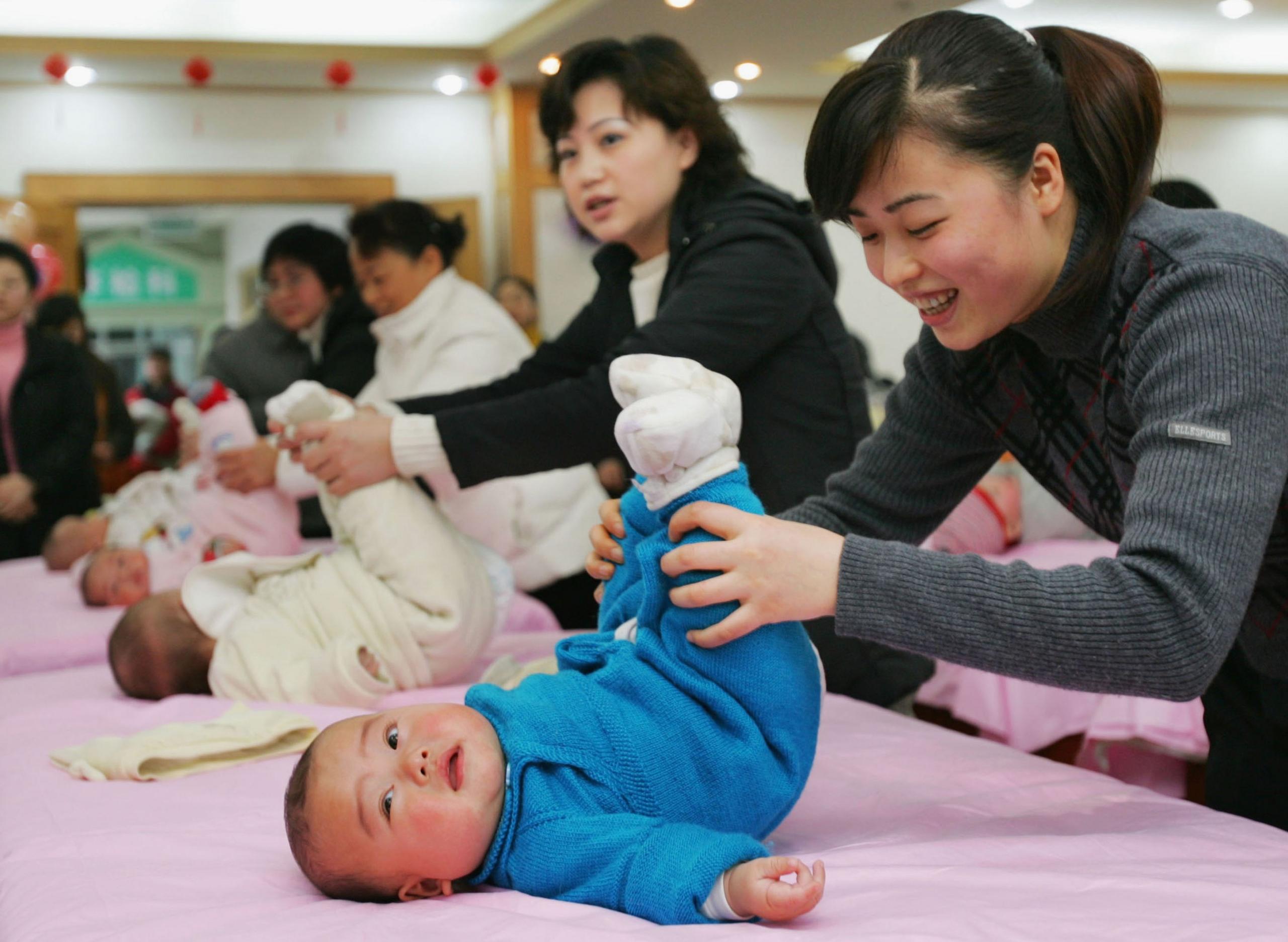
Doctors and researchers have long been warning of alarmingly high Caesarean-section rates globally. Among countries with such high C-section rates, only one has managed to change - China. The story of how China succeeded where others failed is exemplary but also somewhat troubling.
Less than a decade ago, China was criticised by the World Health Organization for having one of the highest Caesarean-section rates in the world. Things have changed very quickly.
China's C-section rate is still double that of Scandinavian countries and the rate is going up - but that rate of increase is slowing. And remarkably, researchers say, the numbers show China is on track to reverse its high C-section rates., external
"China has managed to make a dent in C-section growth rates when other countries like Brazil have not managed to crack it," said Dr Susan Hellerstein, a Harvard University professor who co-wrote a study with Peking University researchers, analysing more than 100 million births in China.
Part of this success is down to serious investment in maternity care and the rise of "wellness" culture among the middle classes in Chinese cities - but the key factor here is the punitive element, which experts fear means women do not really have free choice when it comes to childbirth.
"Why are you saying this now when you are having contractions? Your cervix has already dilated 4cm [1.5in]. A Caesarean is bad for you and the baby... you can't get one," a nurse is recorded telling a mother pleading for a C-section, in a 2016 study by University of Pennsylvania researcher Eileen Wang. , external
Nevertheless, many acknowledge that it's remarkable for a country that recorded 17.2 million live births in 2017 to effect such a shift - it has not been replicated elsewhere.

So, what's wrong with a Caesarean birth? In many situations, it is a life-saving procedure - but it is also risky and, as with any major surgery, recovery takes time. The World Health Organization cautions against it when not medically necessary.
Some places, such as the Scandinavian nations, have always had low C-section rates and they remain low because this is the prevailing culture. The difficulty arises in those nations that have attained very high C-section rates, such as Brazil, and this has proven hard to shift. With China, however, researchers point to a reversal of trends virtually within a generation.
To explain this, experts have looked to all kinds of significant social shifts, from the rise of wellness culture to the impact of the one-child policy. But one factor sticks out as decisive: the power of the state.
China's health bureaucracy sprang into action in 2001, when the National Health and Family Planning Commission highlighted reducing C-section rates as a national priority in their 10-year plan, and in 2010 after a WHO paper showed the country's rate at 46%.
There are now compulsory natural birth and breastfeeding classes, retraining for physicians to strengthen obstetrics skills and more midwifery training institutes.

But the most striking difference in China's approach compared with the rest of the world is just how strictly hospitals are held accountable for their Caesarean-section rates.
"Hospitals which offer delivery in a region are compared against each other and fines are issued if targets are not met," said Dr Liangkun Ma, senior obstetrician at Peking Union Medical College Hospital.
Other penalties include linking state subsidies with C-section rates and revoking hospital licences. In 2012, hospitals with high C-section rates in Hubei province were told they would be shut down and "reformed".

The WHO's Dr Ana Pilar Betrán, who, studies interventions to reduce C-section rates globally, knows of no other country that penalises healthcare providers for high rates. The only other country with a similar policy is Portugal - but there, hospitals are rewarded for having lower rates.
Dr Betrán said setting ceiling rates and penalising healthcare providers was a "dangerous" path to take. "A rate doesn't tell you if the women who need it are getting it," she said.
Even in countries where Caesarean rates are high, women are dying because they are not accessing this life-saving surgery. In Peru, Dr Betrán said, Caesarean rates among the richest women were about one in two but only 5% of women in the poorest segment of society delivered via C-section.
The changes in China's guidelines had taken choice in the childbirth process away from Chinese mothers, said Dr Carine Ronsmans, co-author of a study published in the British Medical Journal (BMJ) in 2018., external
"Part of government policy is something quite unique to China and is something we in the West would worry about - that is doctors are allowed to go against the will of the woman. In the legal guidelines, not just the clinical guidelines, doctors are told they can go against the woman's wishes," she said.
In one case that dominated local headlines last year, an expectant mother in labour, Ma Rongrong, jumped out of a hospital window to her death after she was refused a C-section. More recently, a man was detained for assaulting a medical professional after his wife was denied a C-section.
The rise of wellness culture
But it's not all about a climate of fear and refusal. The women of China's burgeoning middle class are part of this change as well and making positive choices, nudged by the state.
As soon as she had found out she was pregnant with her first child, Daisy Lan said, she had consumed information voraciously and concluded a natural birth would be better for her and baby. Her friends who had babies earlier, though, had made a different choice.

Daisy Lan (left) is among the millions of Chinese mothers going against the global tide of rising C-section rates
"Some feared labour pain so they chose a C-section. But things are different now," Ms Lan said.
"Chinese mothers want better quality of life and this means a healthier life and greater awareness of what is good for them," said Dr Liangkun Ma.
"It's this same desire to live healthier that drives patients to actively seek information about childbirth through apps and WeChat groups, which raises awareness of the risks that come with C-sections," she said.
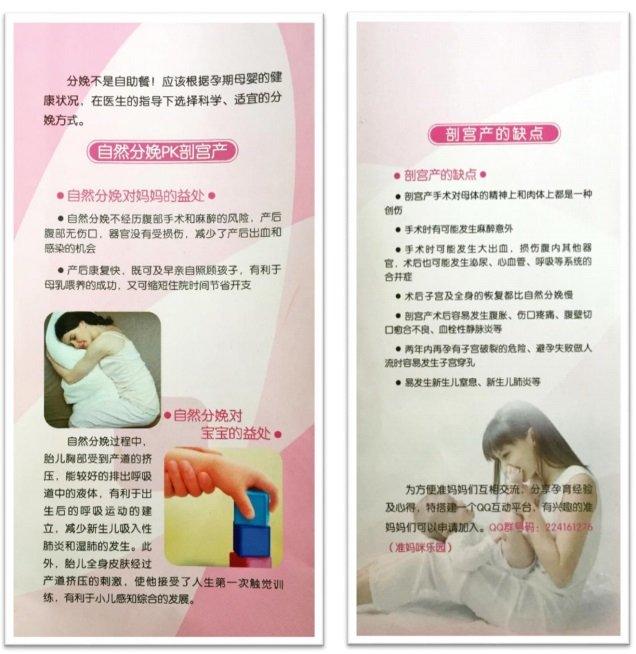
A brochure at a Shanghai hospital reads: "Going natural is best. For a healthy mum-to-be, when you choose green foods, appreciate natural sceneries, and pursue natural beauty, why not let your delivery process be more natural and beautiful?"
Ms Lan said educating herself online about the options for easing pain during childbirth had helped her settle on natural birth - that and the possibility of a cleverer baby, a popular but obviously unproven claim made in Chinese parenting blogs.
Some hospitals now even provide more alternative therapies for mothers' pain relief, such as yoga, mindfulness and music.
So, it's perhaps unsurprising that the phenomenon is most dramatic in China's super-cities, where mothers are turning away from the knife in large numbers, as the 2017 study of 100 million births in China published by the Journal of American Medical Association shows, external.
But there are still wide gaps between urban and rural China. Improved facilities and costs have broadly seen C-section rates rise in rural regions - but in some areas rates remain so low, there is concern about lack of medical care access at birth for women in need.
China's population, in cities and in rural areas, has been controlled for years, so it would be natural to consider one of China's biggest social shifts in recent years - the scrapping of its one-child policy - as another possible factor affecting C-section rates. But the evidence for this is inconclusive.
Meanwhile, other changes to the law now mean patients don't need to just prove harm but also negligence and causation for a legal case to be credible. And this is crucial in a country where obstetricians run the highest risk of being sued for medical malpractice.
Whatever the reasons behind the change, Dr Betrán said this focus solely on C-section rates distracted from the ultimate goal of providing the best care for mother and child. Northern European countries, which had consistently kept C-section rates low, had not achieved that by employing policies specifically to keep rates down but by ensuring quality care, she said.
"We should be careful not to lose perspective," she said. "What happens when a woman needs or wants a Caesarean section [including] for psychological reasons and in this whole atmosphere of Caesarean-section focus, they don't get it?"
Ultimately, the real key to tackling the growth rate is to persuade more first-time mothers to have natural births, many argue, and the study in the BMJ suggests this might already be happening.
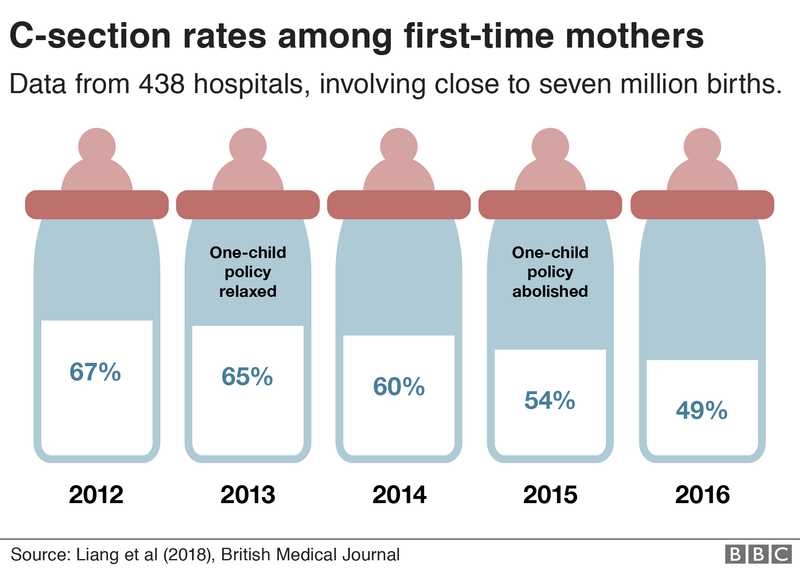
China is certainly well ahead of the game for having implemented a multi-pronged approach to reducing the rates - but the difference is the punitive threat behind failure to comply.
Ms Lan was not forced into a natural birth but, she said, she had never truly had a choice. At 34, she had been an older first-time mother by Chinese standards, she said, and her peers who had given birth earlier had congratulated her for her bravery in undergoing a natural birth.
"They were allowed to choose but now it is different," she said.
- Published12 October 2018
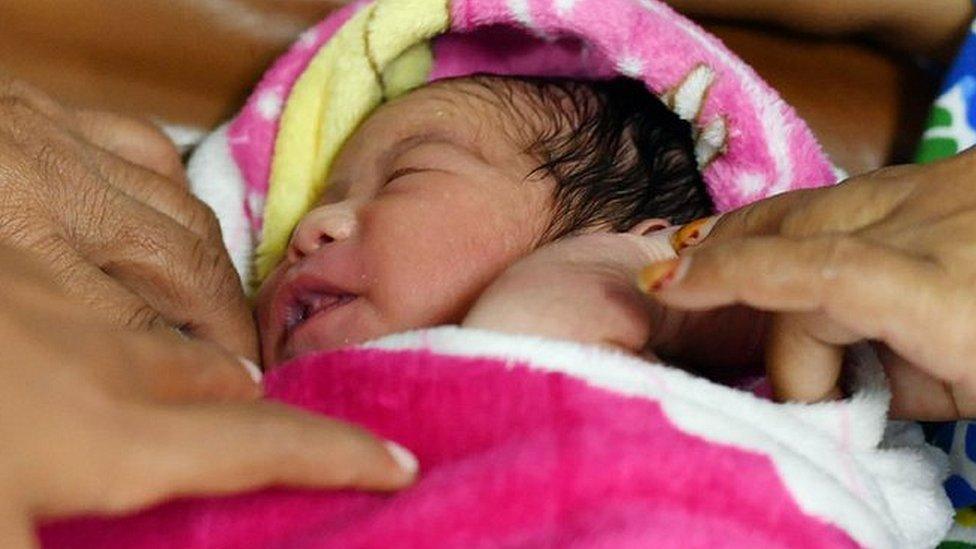
- Published31 August 2018
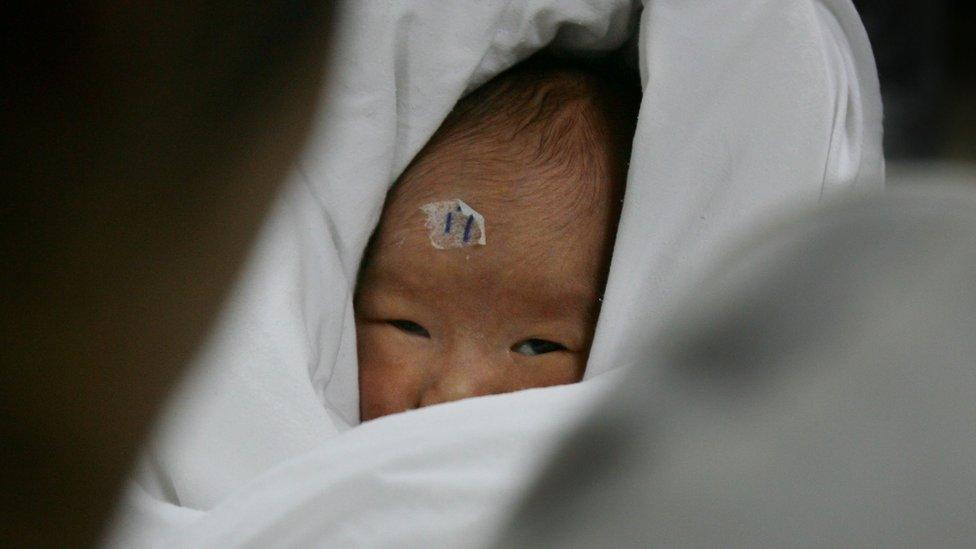
- Published10 August 2018
